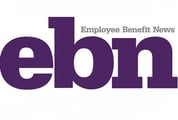 No man is an island entire of itself; every man
No man is an island entire of itself; every man
is a piece of the continent, a part of the main;
if a clod be washed away by the sea, Europe
is the less, as well as if a promontory were, as
well as any manner of thy friends or of thine
own were; any man’s death diminishes me,
because I am involved in mankind.
And therefore never send to know for whom
the bell tolls; it tolls for thee.
--John Donne, Meditation XVII (translated from Old English)
The English poet, cleric, and Parliament member John Donne provided keen insight into the interdependent nature of our relationships with others when he wrote that “no man is an island.” His observations about the connectivity of humankind are still relevant today. In a certain sense we are responsible for, and dependent on, each other. Here in the U.S., our nation’s 401(k) plan system is designed so that both employers and workers across the country contribute to our collective financial security in retirement.
Just as no man is an island, no employer-sponsored retirement plan is an island. New hires who join a plan all come from other companies, where they were likely enrolled in their former-employer 401(k) plans. Similarly, participants who leave a plan when they change employers have accrued 401(k) savings that they will likely want to take with them.
Plan sponsors that don’t make use of available technology solutions to create seamless plan-to-plan portability for past and current participants are, in effect, turning their plans into islands which are cut off from other plans in the U.S. retirement system. The fiduciary responsibility for not encouraging easy portability of retirement savings accounts doesn’t fall on record-keepers—it falls on sponsors.
Fortunately, auto portability, which forms the analogous bridges, airways, and shipping lanes required to connect island plans with the rest of the retirement system, went live last summer. Auto portability is the routine, standardized, and automated movement of a retirement plan participant’s 401(k) savings from their former employer’s plan to an active account in their current employer’s plan. One of the key underlying technologies that makes auto portability seamless is the paired “locate” and “match” functions, which are designed to track down participants who have left their savings behind, and begin the process of rolling their stranded accounts into active accounts in their current employers’ plan.
Working in tandem, the “locate” technology and “match” algorithms also create a new opportunity to remove a significant majority of missing participants from plans—an “auto locate” service that searches plan record-keepers’ active account records to find current address information for terminated/inactive records, and then “matches” them to confirm that the accounts belong to the same person. According to new research from Boston Research Technologies, 67% of stale address records for missing participants can be matched with address records for active participants in the systems of record-keepers that sponsors already rely upon as their plan administrators. These records are also very reliable (with a 92.6% accuracy rate).
The active account records in record-keepers’ systems are a vast untapped resource for sponsors to harness for reducing the number of small, stranded accounts in their plans—and helping past participants consolidate their 401(k) savings accounts and improve their prospects for a financially secure retirement.
The actions that sponsors take to improve their plans, and the resources they tap to do so, can make a positive impact on not only their plans, but also directly on the financial wellness of former participants and indirectly on other plans across the retirement system. And at a time when the Department of Labor is expected to heighten its focus on lost and missing participants during plan audits, it simply makes sense for sponsors to ensure that their plans are not islands when it comes to locating, matching, and transporting small, inactive accounts.
According to Boston Research Technologies’ survey, the twin issues of missing participants and small accounts will only get worse without auto portability and its account-reducing consolidation benefits. In its first-of-its-kind survey of participants who were terminated from at least one employer-sponsored 401(k) plan, Boston Research Technologies found that one-fifth of all participant relocations resulted in a stale address record. The reason? Participants neglected to update their addresses with plan record-keepers when they moved. The increasing mobility of the workforce isn’t likely to reverse course—the survey found that 37% of active plan participants have changed their address since beginning their current jobs. Furthermore, the majority of participants (60%) would prefer to update their addresses, or consolidate their prior-employer plan accounts in their current-employer plans, using an automated process.
Just as no man is an island, no employer-sponsored 401(k) plan is an island. By taking advantage of technology solutions to facilitate the seamless plan-to-plan portability of retirement savings, sponsors can work within the broader 401(k) and retirement services universe to reduce missing participants and small accounts.
